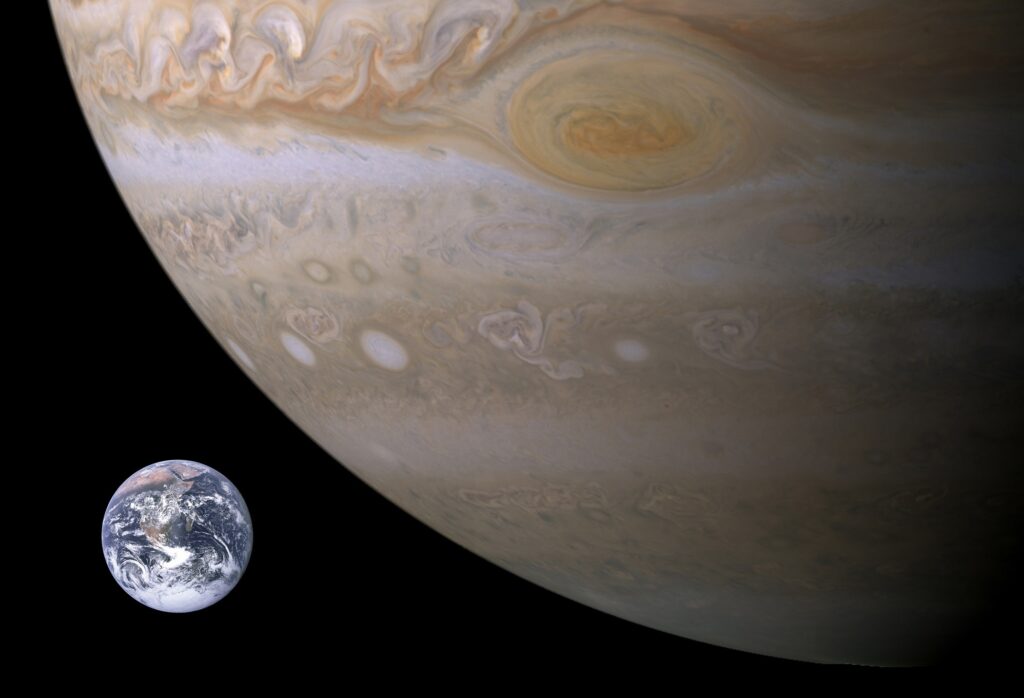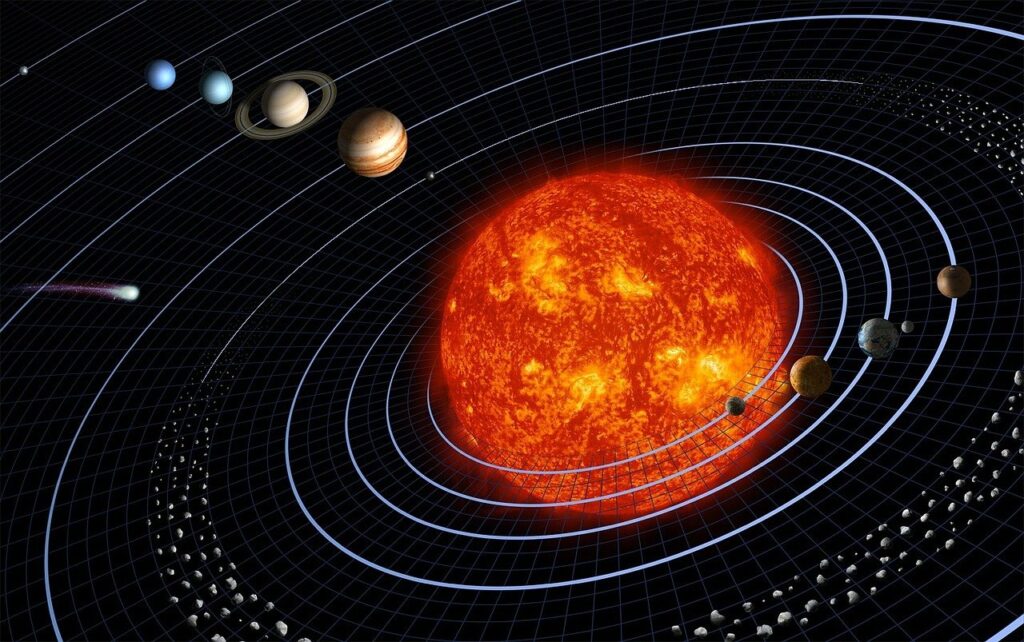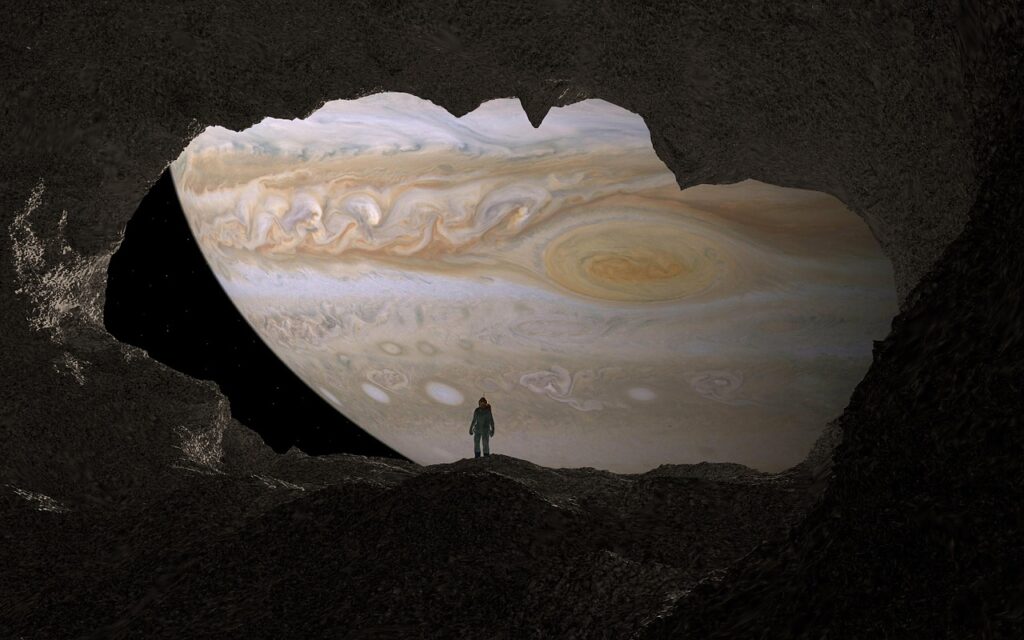When we look up at the night sky, it’s hard not to be captivated by the immense celestial objects that shine in the darkness. Among them, Jupiter stands out as a giant among giants.
But have you ever wondered, just how many Earths could fit inside this colossal gas giant? Join us on this short cosmic journey as we delve into mysteries of Jupiter and explore this intriguing question.
Related: What Would Happen If Jupiter Disappeared?
Related: How Many Earths Can Fit in Sun?
Understanding Jupiter’s Hugeness

Jupiter, the largest planet in our solar system, is a giant of a celestial body. It is a gas giant, primarily composed of hydrogen and helium, with no solid surface (mostly swirling gases and liquids) to stand on. As we attempt to comprehend its enormous size, we’ll start by examining some key figures.
- Diameter of Jupiter:
- Jupiter has a diameter of approximately 142,984 kilometers (88,846 miles). This makes it more than 11 times wider than Earth!
- Volume of Jupiter:
- The volume of Jupiter is astonishing, and it’s approximately 1,321 times greater than Earth’s.
- Mass of Jupiter:
- Jupiter’s mass is approximately 318 times that of Earth, which is why it’s often referred to as the “king of planets.”
Now, let’s calculate how many Earths can fit inside Jupiter.
Calculating the Number of Earths in Jupiter

To determine how many Earths can fit inside Jupiter, we need to consider the volume of both celestial bodies. We know the volume of Jupiter is approximately 1,321 times greater than that of Earth. This means that we can fit 1,321 Earths into the volume of Jupiter.
However, this calculation assumes that the Earths are all stacked uniformly and snugly inside Jupiter, which is not the case. Jupiter is a gas giant, so there’s no space inside it for Earths to fit as solid objects. But for the sake of this theoretical exercise, we can say that roughly 1,321 Earths could fit inside Jupiter.
Challenges of Comparing Earth and Jupiter

It’s important to note that this calculation is highly simplistic and not representative of the complex nature of these celestial bodies. The comparison of a terrestrial planet like Earth with a gas giant like Jupiter is like comparing apples and oranges.
Jupiter’s atmosphere is composed of different layers of gases, and as you descend deeper into its atmosphere, the pressure and temperature increase dramatically. This is in stark contrast to Earth, where we have a solid surface, an atmosphere composed of nitrogen and oxygen. Or to be more precise: 78 percent nitrogen, 21 percent oxygen, 0.9 percent argon, and 0.1 percent other gases.
Moreover, the “surface” of Jupiter is not a solid one but rather a transition from gas to a more dense liquid or metallic hydrogen. Trying to fit Earths into Jupiter doesn’t account for the vast differences in composition and behavior of the two planets.
In Summary

While the notion of fitting Earths inside Jupiter might be a fascinating thought experiment, it’s important to remember that Jupiter is a unique and awe-inspiring gas giant with properties vastly different from those of our home planet. The comparison is a mere exercise in understanding the scale of celestial bodies in our solar system.
By exploring this intriguing question, we hope to have shed some light on the grandeur of the solar system’s largest planet. Jupiter’s mysteries are boundless, and the more we learn, the more it deepens our understanding of the cosmos and our place within it.
Note: If you’re interested in similar articles and thought experiments related to cosmos you can check out :




















